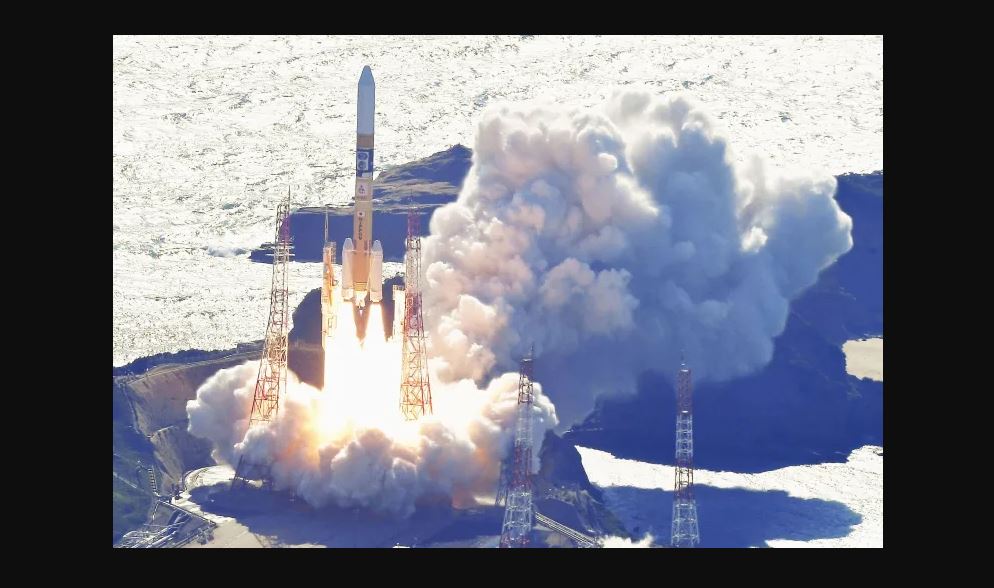Japan Successfully Launched The Lunar Lander 'SLIM' Into Space On Thursday
Japan successfully launched the lunar lander 'SLIM' into space on Thursday, achieving a significant milestone in lunar exploration. By launching the domestically developed H-IIA rocket, Japan aspires to become the world's fifth country to successfully land on the moon, a goal set for early next year.
Author:Karan EmeryReviewer:Daniel JamesSep 08, 202350.2K Shares947.2K Views

Japan successfully launched the lunar lander 'SLIM' into spaceon Thursday, achieving a significant milestone in lunar exploration. By launching the domestically developed H-IIA rocket, Japan aspires to become the world's fifth country to successfully land on the moon, a goal set for early next year.
The Japan Aerospace Exploration Agency (JAXA) reported that the rocket's launch from the Tanegashima Space Center in southern Japan proceeded as scheduled, releasing the Smart Lander for Investigating Moon (SLIM) with success. The mission had faced several postponements in the past month due to unfavorable weather conditions.
Known as the "moon sniper," Japan is striving to achieve precision in its lunar landing with SLIM, aiming for a touchdown within a remarkable 100 meters of its designated target area on the moon's surface. This ambitious $100-million mission is slated to commence its landing operations around February, following a meticulously planned, fuel-efficient approach trajectory.
“„By creating the SLIM lander, humans will make a qualitative shift towards being able to land where we want and not just where it is easy to land. By achieving this, it will become possible to land on planets even more resource-scarce than the Moon.- The Japan Aerospace Exploration Agency (JAXA)
Globally, “there are no previous instances of pinpoint landing on celestial bodies with significant gravity such as the Moon”, JAXA added.
Just hours following its launch on Thursday, the Japan Aerospace Exploration Agency (JAXA) reported receiving signals from the SLIM spacecraft, indicating that it was operating as expected.
This launch took place approximately two weeks after India achieved the distinction of being the fourth nation to successfully land a spacecraft on the moon with its Chandrayaan-3 mission, which targeted the uncharted lunar south pole. During a similar timeframe, Russia faced a setback when its Luna-25 lander crashed while in the process of approaching the moon.
Japan had experienced two previous unsuccessful lunar landing attempts in the past year. JAXA encountered difficulties when it lost communication with the OMOTENASHI lander and had to cancel a landing attempt back in November. Additionally, the Hakuto-R Mission 1 lander, developed by the Japanese startup ispace (9348.T), met with failure in April when it crashed during its descent to the lunar surface.
SLIM is scheduled to make a precise landing on the near side of the moon, in proximity to Mare Nectaris, one of the lunar seas that appears as a prominent dark area when observed from Earth. Its primary mission objective is to conduct extensive testing of cutting-edge optical and image processing technologies.
Following its successful landing, the spacecraft is tasked with analyzing the composition of olivine rocks found in the vicinity, with the aim of uncovering valuable insights into the moon's origins. It's important to note that SLIM does not carry a lunar rover for surface exploration.
On Thursday, the H-IIA rocket had an additional payload, the X-Ray Imaging and Spectroscopy Mission (XRISM) satellite, which is a collaborative project involving JAXA, NASA, and the European Space Agency. The primary objective of this satellite is to observe plasma winds traversing the universe, a crucial aspect in unraveling the mysteries of star and galaxy evolution.
Following the launch, ground stations located in Hawaii and Japan quickly received signals from XRISM, confirming the successful deployment of its solar panels, as reported by JAXA.
The H-IIA rocket, constructed and operated by Mitsubishi Heavy Industries (7011.T), undertook this mission, marking the 47th H-IIA launch by Japan since 2001 and maintaining an impressive success rate approaching 98%.
JAXA had previously delayed the launch of the H-IIA carrying SLIM for several months to investigate the failure of their new medium-lift H3 rocket during its inaugural flight in March. Japan is planning to retire the H-IIA rocket after its 50th launch in 2024.
Japanese Prime Minister Fumio Kishida expressed on social media after the successful launch that the development of flagship rockets is pivotal for Japan's self-reliant space endeavors.
"We'll build up the momentum toward the successful re-launch of the H3 rocket," Kishida posted on the social media X, previously known as Twitter.
Japan has encountered several setbacks in its recent space missions, including the unsuccessful launch of an Epsilon small rocket in October 2022 and an engine explosion during a test in July.
Looking ahead, JAXA has ambitious plans for collaboration with the Indian Space Research Organisation (ISRO) in a joint Lunar Polar Exploration Mission (LUPEX) scheduled for beyond 2025. In this mission, Japan's H3 rocket will play a crucial role in transporting India's next lunar lander into space.
Conclusion
Japan has set its sights on sending an astronaut to the lunar surface in the latter half of the 2020s as part of NASA's Artemis program. These endeavors signify Japan's commitment to exploring and contributing to space exploration on a global scale.
Jump to

Karan Emery
Author
Karan Emery, an accomplished researcher and leader in health sciences, biotechnology, and pharmaceuticals, brings over two decades of experience to the table. Holding a Ph.D. in Pharmaceutical Sciences from Stanford University, Karan's credentials underscore her authority in the field.
With a track record of groundbreaking research and numerous peer-reviewed publications in prestigious journals, Karan's expertise is widely recognized in the scientific community.
Her writing style is characterized by its clarity and meticulous attention to detail, making complex scientific concepts accessible to a broad audience. Apart from her professional endeavors, Karan enjoys cooking, learning about different cultures and languages, watching documentaries, and visiting historical landmarks.
Committed to advancing knowledge and improving health outcomes, Karan Emery continues to make significant contributions to the fields of health, biotechnology, and pharmaceuticals.

Daniel James
Reviewer
Daniel James is a distinguished gerontologist, author, and professional coach known for his expertise in health and aging.
With degrees from Georgia Tech and UCLA, including a diploma in gerontology from the University of Boston, Daniel brings over 15 years of experience to his work.
His credentials also include a Professional Coaching Certification, enhancing his credibility in personal development and well-being.
In his free time, Daniel is an avid runner and tennis player, passionate about fitness, wellness, and staying active.
His commitment to improving lives through health education and coaching reflects his passion and dedication in both professional and personal endeavors.
Latest Articles
Popular Articles
